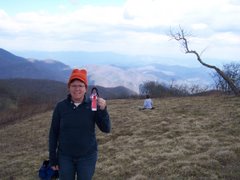Cait Ward
Berkshire School
Environmental Science
November 20, 2015
It has proved to be a beautiful fall
in the Berkshires, and we have taken full advantage of the weather in
Environmental Science. To kick start the
year off, students completed a “21 question” exercise, in which they were asked
to formulate a list of questions based on the surrounding ecosystem. After teasing apart those questions which
were testable, students were grouped based on interest and worked together to
develop an experiment. They have since
been hard at work collecting data!
As it turns out, these experiments
will serve as great platforms for many of our lesson units. Not only will this provide students the
opportunity to share their studies and results with their classmates, but it
will also draw further connections between the material and place that we are
in.
Roman, Jack and Johnny are working
to determine how tree diversity changes as they head farther into the
woods. This group will be experts in
tree identification by the end of their project, and they will be teaching
their classmates how to identify trees as part of our introduction into the ATC
plant phenology program.
 |
Genesis, Chris and Luke have set up
salamander boards (artfully crafted by our own Mr. Dalton!) along three
transects with different soil moisture levels.
We will model this method of study at the Kellogg Conservation Center in
the spring to study an isolated population of Jefferson Salamanders.
 |
Quentin, Charlie and Jeremy are surveying
the diversity and abundance of moss based on light availability. Moss are both pioneer species and
bioindicators of pollution, and data will be used to determine the health of
our Berkshire ecosystem. We will use
their project as a cornerstone of our pollution unit.
 |
Simi and Berit have collected soil
samples in locations both on and around campus to compare the nutrient
levels. In particular, they are looking
to compare differences in nitrogen, phosphorus and pH to determine how
fertilizer applied on campus compares to the natural nutrient levels within the
woods. The results of this project will
help enhance our unit on biogeochemical cycles, which we are currently in the
midst of.
 |
Matt, Jay and Charlie, known on
campus as the “sali-hunters,” have spent their lab time searching for
salamanders. Their goal is to create a
diversity index of the salamanders on the Berkshire campus. Today the group found three Northern
two-lined salamanders!







No comments:
Post a Comment